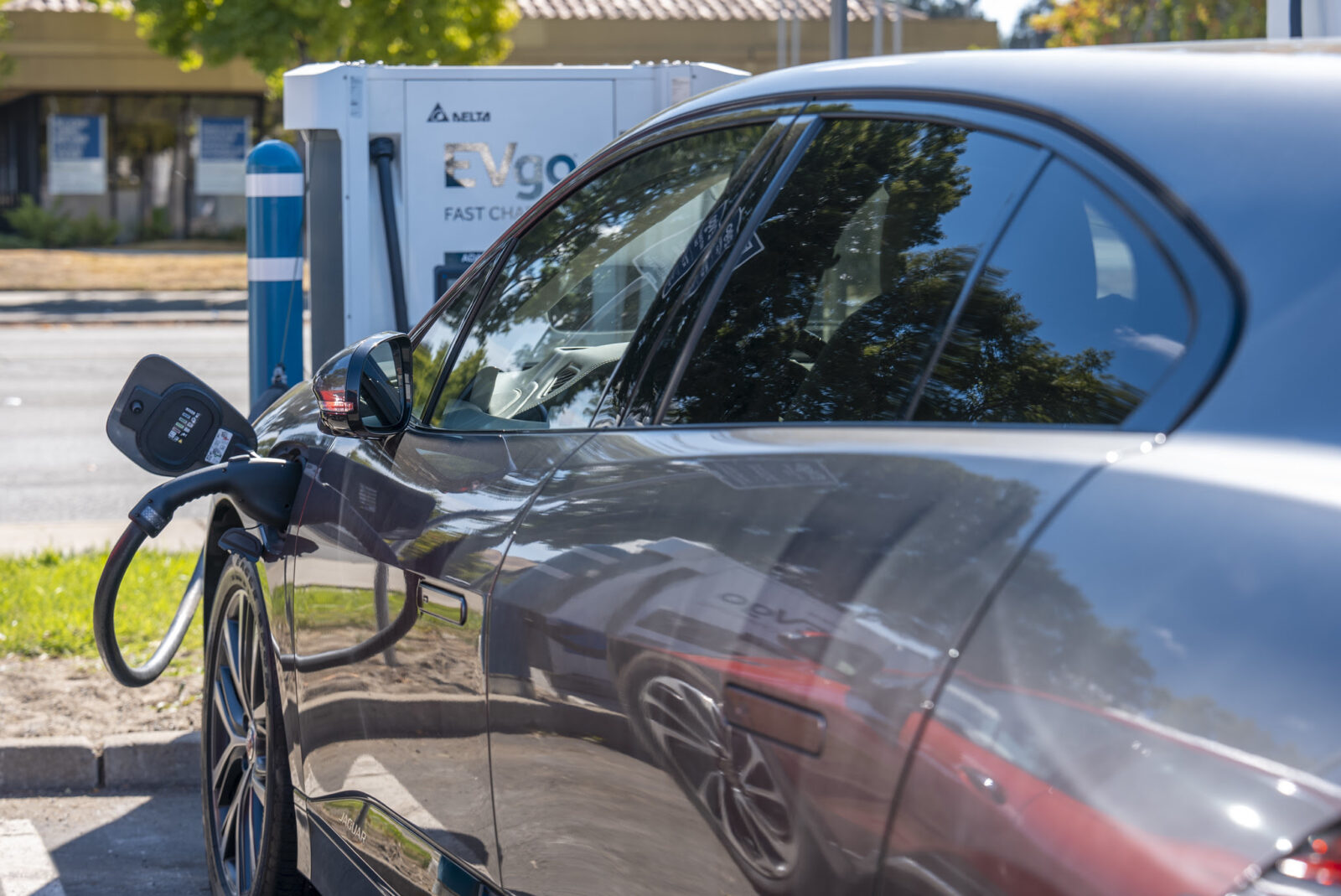Sign up for daily news updates from CleanTechnica on email. Or follow us on Google News!
Electric vehicles are, at heart, mobile energy storage devices, and the US company Dannar is taking full advantage. Dannar has come up with a series of wheeled electric workhorses aimed at knocking out diesel generators and other off-road equipment. They may look weird, but they sport packs of powerful EV batteries from BMW, and they are featured in a high-impact Department of Defense showcase for new extended duration energy storage technologies.
BMW EV Batteries For A Diesel-Killing Mobile Energy Storage Unit
Dannar and BMW began co-developing i3 EV batteries for off-road use around 2015, in a vehicle described as a “first-of-its-kind electric heavy-duty vehicle for infrastructure maintenance and disaster response.”
By 2017 they were ready to roll, and Dannar announced that its new Mobile Power Station® off-road work vehicles would deploy BMW i3 EV batteries. “The MPS can carry multiple BMW i3 battery packs on-board its steel ladder frame and 40,000 lb. rated axles,” Dannar explained back in 2017.
“Custom configurations of multiple BMW batteries provide appropriate clean energy for single day or multiple day work requirements,” they added.
Rather than rest on the laurels of zero emission workability, Dannar front-loaded the Mobile Power Station with a Lego-like ability to add and subtract various off-the-shelf parts and equipment, enabling its owners to use the same vehicle for different tasks, under different seasonal conditions.
US DOD Eyeballs i3 EV Batteries For Mobile Energy Storage
In 2020 the mashup between Dannar’s mobile energy storage unit and BMW’s EV batteries soon caught the eye of the AFWERX energy innovation challenge, a technology transition initiative of the US Air Force.
The Air Force connection has suddenly blossomed-out into a major Defense Department initiative under the banner of the Defense Innovation Unit.
Earlier this week, DIU announced the new “Extended Duration for Storage Installations” project under the Air Force and Navy, aimed at demonstrating three new technologies. In addition to Dannar’s mobile lithium-ion EV batteries, the initiative features stationary flow batteries from CellCube and Redflow.
“The Extended Duration for Storage Installations (EDSI) project will make resilient backup power systems a reality for DoD installations and operational energy platforms by increasing the minimum power threshold and uptime that batteries, bases and battlefield energy, and sourcing use can all stay online,” DIU explained in a press release earlier this week.
“Since battery systems can draw power during non-peak times for lower cost, the EDSI effort will help installations lower their power inputs and draws to isolate high power loads when general demand for electricity is high in containers that can be stationary and mobile,” they added.
Dannar will contribute four different configurations of its i3 EV battery solution to the project. The vehicles will operate in support of new electric VTOL (vertical takeoff and landing) aircraft at two Air Force sites, and participate in a vehicle-to-grid/vehicle-to-vehicle resilience evaluation initiative at three sites under the umbrella of the Navy and Marine Corps.
EV Batteries To Charge Flying Electric Vehicles
The key word in the DIU project is “extended.” That’s a big difference in scale compared to long duration energy storage systems. Ideally, long duration energy storage systems can store enough clean kilowatts from renewable resources to produce electricity for a full day, multiple days, weeks, months, or even seasons at a time. In contrast, the rule of thumb for conventional lithium-ion battery arrays is currently around six hours, though systems with an eight-hour duration are beginning to emerge.
DIU is setting the bar at “extended,” defined as the ability to produce from 50 kilowatts up to 1 megawatt for at a minimum of eight hours straight.
That may seem low compared to long duration systems, but apparently it’s enough to build new efficiencies into eVOTL operations.
DIU cited AFWERX Agility Prime Engineer, Brooke Ezell, who explained that new energy storage technology will “will enable us to fill gaps in existing electrical infrastructure and manage energy resiliency and charging limitations related to eVTOLs while also increasing the number of eVTOL flights possible per day and utilizing more renewable energy sources.”
The Big Picture On Mobile Energy Storage
The new DIU initiative adds yet another element to the role of the US military in pushing the electrification envelope. The Department of Defense became known as an early adopter of utility-scale solar power during the Obama administration, with energy resilience and security topping the list of near-term benefits. Grid resilience and environmental benefits to the communities surrounding military facilities have also factored into the renewable energy push.
The Defense Department’s forays into microgrids, electric vehicles, and new EV batteries have received somewhat less media attention, especially during the Trump years when presidential enthusiasm for saving the planet was on the wane.
Nevertheless, work continued apace, and new solid-state EV batteries could help open up new opportunities to fill the military’s need for rugged energy storage technology that can withstand extreme environments.
The Solid State EV Battery Of The Future
Various branches of the US military have already begun eyeballing solid state technology. BMW and many other leading automotive stakeholders have also begun investing in various solid state ventures (see more CleanTechnica coverage here), so don’t be surprised if you see EVs from Dannar sporting a solid state BMW battery some day.
Solid state or not, EV batteries have yet to find a footing in tanks and other heavy-duty military applications, but they are beginning to work their way into light duty applications.
The Defense Department has also been experimenting with hydrogen fuel cells for zero emission mobility. As with EV batteries, tanks appear to be off the table for the time being, though fuel cell auxiliary power could still be in play as a range extender.
If the Defense Department decides to jump on the fuel cell bandwagon with both feet forward, Dannar appears to be ready. Last year the company announced a new wrinkle in its fuel cell collaboration with the US firm Advent Technologies, aimed at developing a zero emission range extender for Dannar electric vehicles.
If all goes according to plan, fuel cells could replace Dannar’s current range extension solution, which consists of a 50-gallon fuel tank.
The two companies also plan to develop a large scale, fuel cell-enabled charging station for electric vehicles.
Military applications remain to be seen, but Advent has some interesting connections of its own to combine with Dannar’s Defense Department hookup.
Advent has been working with three Energy Department laboratories — Los Alamos, Brookhaven, and the National Renewable Energy Laboratory — on a fuel cell commercialization project under the L’Innovator umbrella of the Los Alamos lab, with an assist from the ARPA-E funding office.
The aim is to develop a more durable, long range fuel cell for heavy duty applications, with a focus on a new polymer-based material that resolves concerns about overheating.
Apparently all that hard work has paid off. “Implementing the composite polymer electrolyte achieved a power density of nearly 800 milliwatts per square centimeter at 160 degrees Celsius, a 60% improvement compared to phosphoric acid-based fuel cells,” Los Alamos reported last spring.
The L’Innovator program has been extended into 2024, so stay tuned for more news on Advent and Dannar.
Follow me @tinamcasey on Bluesky, Threads, Post, LinkedIn, and Spoutible.
Photo: Mobile Power Station with BMW i3 EV batteries courtesy of Dannar.
Have a tip for CleanTechnica? Want to advertise? Want to suggest a guest for our CleanTech Talk podcast? Contact us here.
EV Obsession Daily!
I don’t like paywalls. You don’t like paywalls. Who likes paywalls? Here at CleanTechnica, we implemented a limited paywall for a while, but it always felt wrong — and it was always tough to decide what we should put behind there. In theory, your most exclusive and best content goes behind a paywall. But then fewer people read it!! So, we’ve decided to completely nix paywalls here at CleanTechnica. But…
Thank you!
Tesla Sales in 2023, 2024, and 2030
CleanTechnica uses affiliate links. See our policy here.




